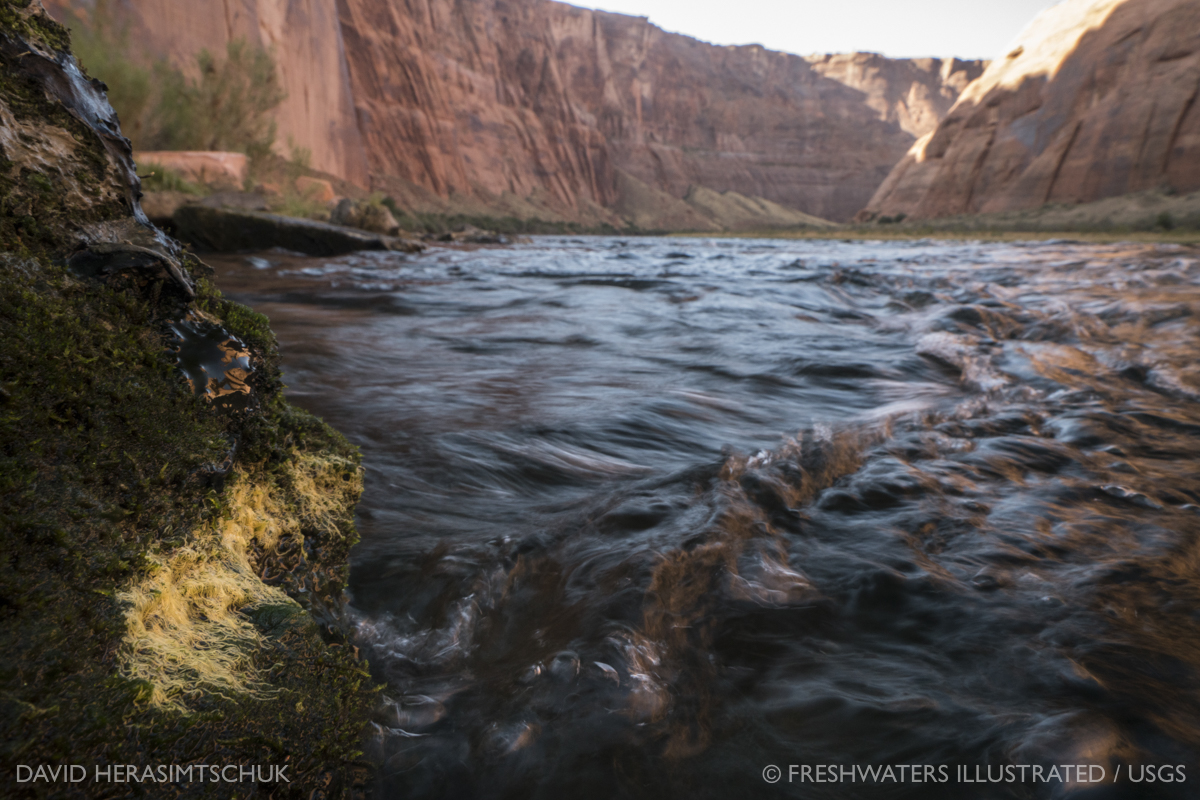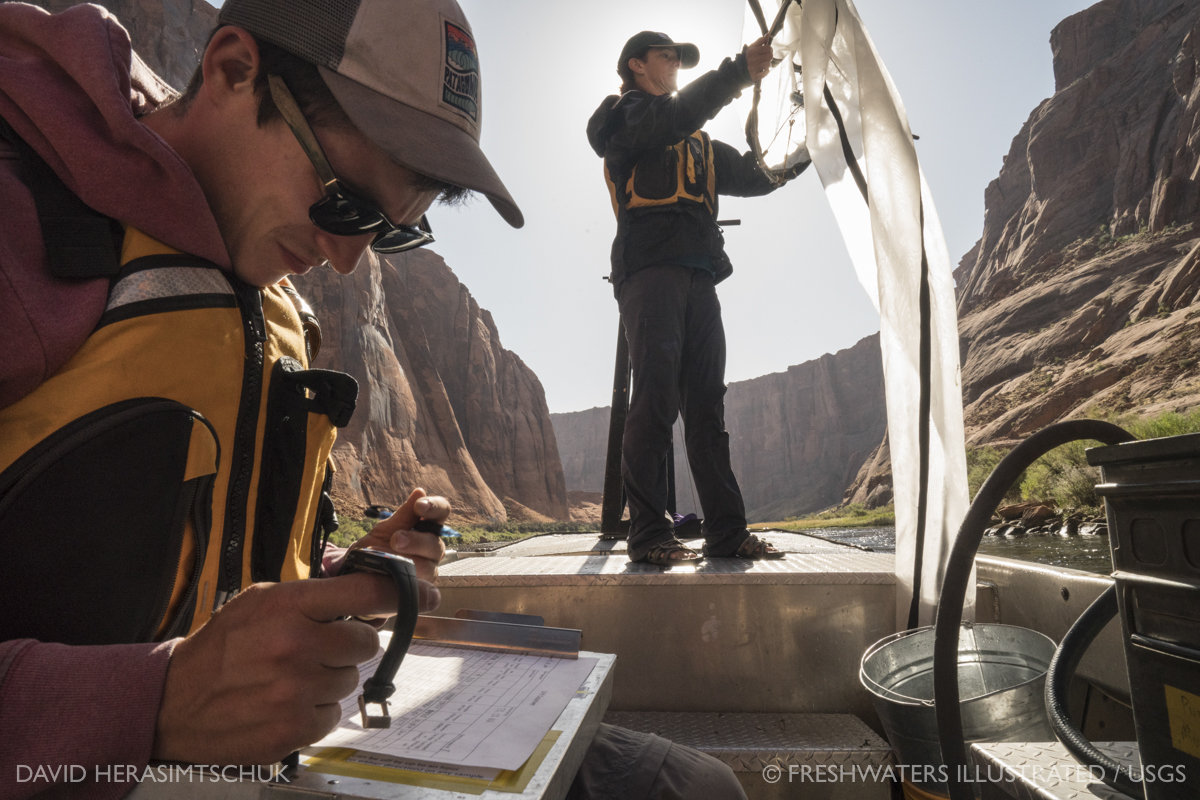- Reclamation
- Upper Colorado Basin
- Glen Canyon Dam Adaptive Management Program
- Long-Term Experimental and Management Plan
Glen Canyon Dam
Long-Term Experimental and Management Plan
The Long-term Experimental and Management Plan provides a framework for adaptively managing Glen Canyon Dam operations and other management and experimental actions, consistent with the Grand Canyon Protection Act and other provisions of applicable Federal Law.
No Fall 2025 High-Flow Experiment at Glen Canyon Dam
After careful consideration of resources and downstream activities, a fall High-Flow Experiment (HFE) at Glen Canyon Dam will not be implemented in 2025.
The conclusion not to conduct this experiment was based on input from a collaborative team, including Department of the Interior agencies—Bureau of Reclamation, National Park Service, U.S. Geological Survey, U.S. Fish and Wildlife Service, Bureau of Indian Affairs, the Department of Energy's Western Area Power Administration, and representatives from all seven Colorado River Basin States.
The recommendation against conducting the experiment was largely due to the lapse in government appropriations which restricted personnel and the ability to monitor the experiment.
The 2024 Long-Term Experimental and Management Plan (LTEMP) Supplemental Environmental Impact Statement (SEIS) Record of Decision (ROD) introduced a new protocol for HFEs, establishing a year-long sediment accounting period that begins on July 1.
The ROD outlines specific sediment triggers that must be met before an HFE can be considered. The collaborative team will reconvene in late winter 2026 to initiate the planning process for a possible spring 2026 HFE.
Long-Term Experimental and Management Plan
The U.S. Department of the Interior, through the Bureau of Reclamation and National Park Service developed a Long Term Experimental and Management Plan to provide a comprehensive framework for adaptively managing Glen Canyon Dam over a 20-year period consistent with the Grand Canyon Protection Act and other provisions of applicable federal law.
This framework helps inform specific dam operations and actions that could be implemented to improve conditions and continue to meet the GCPA's requirements and to minimize—consistent with law—adverse impacts on the downstream natural, recreational, and cultural resources in the two park units, including resources of importance to American Indian Tribes.
The development of the Long-Term Experimental and Management Plan stems from the need to use scientific information developed since the 1996 Record of Decision to better inform DOI decisions on dam operations and other management and experimental actions so that the Secretary may continue to meet statutory responsibilities for protecting downstream resources for future generations, conserving species listed under the Endangered Species Act, avoiding or mitigating impacts on National Register of Historic Properties-eligible properties, and protecting the interests of American Indian Tribes, while meeting obligations for water delivery and the generation of hydroelectric power.
Recognizing the ecological threat that smallmouth bass pose on the Colorado River downstream of Glen Canyon Dam, Reclamation has concluded that immediate actions must be developed to ensure the prevention of population establishment of smallmouth bass and other warmwater nonnative, invasive fish. In addition, Reclamation has acknowledged improved ways to assess sediment inputs and sediment retention that may affect the frequency of High Flow Experiment releases.
Accordingly, Reclamation completed a revision to the 2016 LTEMP FEIS to address the potential impacts from reduced HFE release frequency and the threat of smallmouth bass below Glen Canyon Dam. Reclamation has concluded that the potential impacts from smallmouth bass pose an unacceptable risk to threatened and endangered species below the dam.
Glen Canyon Dam Long-Term Experimental and Management Plan EIS Documents
- Record of Decision for the Glen Canyon Dam Long-Term Experimental and Management Plan Supplemental Environmental Impact Statement
- Glen Canyon Dam Long-Term Experimental and Management Plan Final Supplemental Environmental Impact Statement
- Record of Decision for the Glen Canyon Dam Long-Term Experimental and Management Plan Final Environmental Impact Statement
- Glen Canyon Dam Long-Term Experimental and Management Plan Final Environmental Impact Statement
High Flow Experimental Releases
The last High-Flow Experiment conducted by the Department of the Interior occurred during April 24-27, 2023. Water releases from the dam during the 3-day spring flow experiment were as high as 39,500 cubic feet per second (cfs). High sediment loads in Marble Canyon and favorable hydrology conditions were present to support a spring experiment based on the analysis considered under the Long-Term Experimental and Management Plan, which allows for high-volume dam releases for sediment conservation. Five HFEs have been conducted since the High Flow Experiment Protocol was initiated in 2012. Those HFEs occurred in November 2012, 2013, 2014, 2016 and 2018. This was the first spring release implemented under the protocol.
High Flow Experiment at Glen Canyon Dam
HFE releases are triggered based on sediment accumulation in the Colorado River. They are generally driven by storm activity resulting in floods in the Paria River that move sediment over time into the Colorado River. Each year HFE releases are evaluated and when conditions permit can be scheduled within two timeframes: in the spring from March through April and in the fall from October through November, per the 2016 LTEMP. Due to regional weather patterns and other factors, fall HFE releases are expected to be triggered more often than those in the spring. An accounting period for Paria River sediment inputs was determined in the LTEMP; if enough sediment enters the Colorado River from July-November, a fall HFE release may be planned and conducted. Due to logistical and operational constraints, the decision to conduct a fall HFE release is usually made in October rather than at the end of the fall accounting period.
The process for recommending experiments under the LTEMP, which has been used for past experiments, involves outreach to the Glen Canyon Dam Adaptive Management Program partners through regular meetings and additional notification to Tribes inviting consultation. The process also involves coordination to plan for the possible experiment, evaluate the status of resources, and make the technical recommendation whether to conduct an experiment. Ongoing research and monitoring through the Glen Canyon Dam Adaptive Management Program ensures the best science and data are available for making decisions related to flow experiments. The recommendation is then presented to the Department of the Interior for a final decision.
2023 HFE Documents
Macroinvertebrate Production Flow (Bug Flows) Releases
At the recommendation of the Glen Canyon Dam Planning/Implementation Team (Technical Team), the Secretary's Designee issued a decision to implement experimental macroinvertebrate production flow (Bug Flows) at Glen Canyon Dam. The experiment began on May 1 and continued through August 31, 2022, this concluded the fourth Bug Flow under LTEMP.

Bug Flows consist of steady weekend releases from Glen Canyon Dam and normal fluctuating releases during the weekdays. The steady weekend flows are expected to provide favorable conditions for aquatic insects to lay eggs along the Colorado River downstream of Glen Canyon Dam. The minimum flows on weekdays are designed to be similar to flows on the weekends. This flow regime would decrease how dramatically water levels change on the weekends, thus preventing the insect eggs that are laid along the river margins from drying out.

Glen Canyon Dam. Photo provided by Freshwaters Illustrated/USGS.
Technical experts at the U.S. Geological Survey’s (USGS) Grand Canyon Monitoring and Research Center (GCMRC) and Western Area Power Administration (WAPA) have coordinated the design of the experiment to optimize the benefits for insects throughout the Glen, Marble, and Grand Canyons while minimizing negative impacts to hydropower. The purpose of this experiment is to test the effectiveness of Bug Flows for improving insect production, and thus increase the availability of food for desired fish species including the endangered humpback chub (Gila cypha) and rainbow trout (Oncorhynchus mykiss), an important sportfish, as well as terrestrial wildlife like birds and bats.
Bug Flow experiments were implemented at Glen Canyon Dam from May through August for three consecutive years: 2018, 2019 and 2020, but were not implemented in 2021. Findings suggest that the previous Bug Flow experiments may have improved conditions for adult insects, increased the abundance of caddisflies river wide, and increased algae production. In addition, anglers captured more rainbow trout on average during Bug Flows than they did during typical fluctuating flow patterns. Contrary to predictions, no increase in the abundance of midge flies were observed during the first three years of the experiment. Scientists believe that further experimentation, research and monitoring may help to determine whether the Bug Flows experiment benefits native fishes in the Lees Ferry Reach below the Glen Canyon Dam and in the Grand Canyon. This experiment provides scientific information important to future decision-making.
The Glen Canyon Dam Implementation Team will closely monitor the condition of resources during the experiment and may terminate implementation at any time if unanticipated negative impacts are observed or are likely to occur due to ongoing drought and low lake levels.

